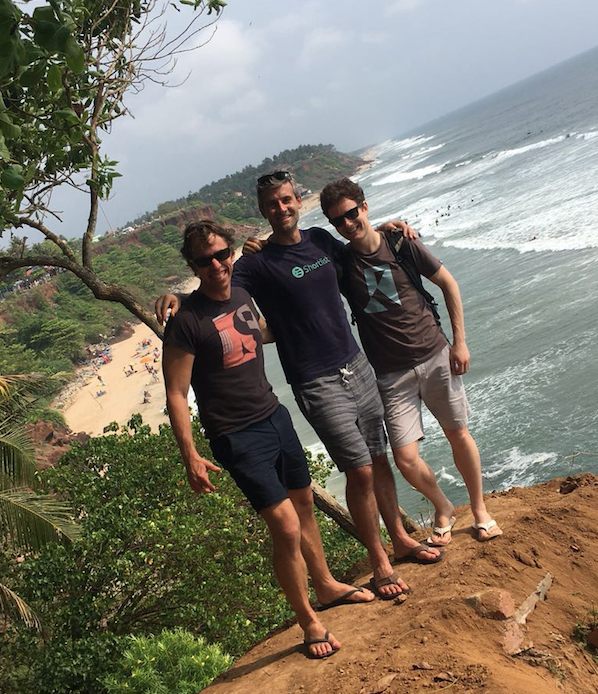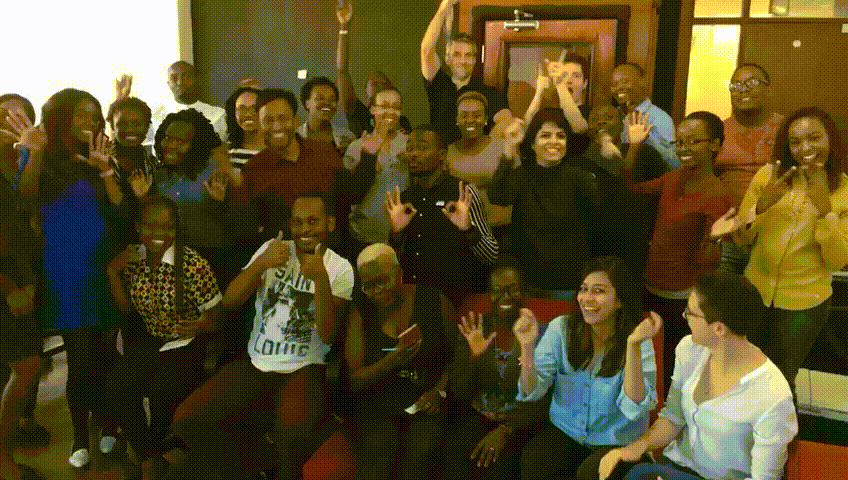Are you getting flooded with links to helpful tips on how to work from home? We are. We’ve read many of them, and will keep reading them (and the webinars and the podcasts). We’ve learned a lot about the practical side of making the shift from office to remote: comfy workspaces, video-conference tools, the importance of standing up occasionally (figuratively and literally). We’ve also thought about this in the past, and written about our approach to managing a distributed team across 3 offices. What we’ve seen less is how to maintain — or even build — team culture in a time of crisis, when the normal, in-person stuff is taken away.
By team culture, we’re referring to the set of values and behaviors that define the essence of your company – it’s what people do when no one is looking. This is never more important, and never tested more, than in a moment like now: when we are seeking stability, togetherness, and belonging — and when, quite literally, no one is looking (because we’re all sitting at home).
There’s a lot to say on this topic, but I’m going to focus on the lighter side. We all have enough seriousness in our life right now, don’t we? So what has been working for us so far to feel connected, whole, and happy?
1. WhatsApp ridiculousness, fun and COVID-free
Some companies have WiFi bandwidth that enables them to “leave Zoom on all day” and work next to each other virtually. Not us! We’re usually lucky if our home WiFi is stable enough to let us have the video on for a minute to wave. Instead, WhatsApp is king (or queen). In addition to consistent chatter, we typically have about one group conversation per day with prompts to get people going. We send out prompts like “What is the meaning of your name?” or “Send a picture of an item that is important to you, and tell us why,” and encourage team members to share responses. The answers have been funny, personal and vulnerable, and it’s been an amazing way to learn more about each other and stay connected.
We also celebrate birthdays and work anniversaries, send snapshots of our days (mini-tours of home life!), ongoing GIF/meme battles (which I lose handily), and more. For the most part, we’re encouraging our team to keep these channels largely free of the latest coronavirus news, (we share key information on other channels and trust people are getting it from other sources, too). Instead, we let our Shortlist channels be silly, positive, and team-focused.

Bitmojis, songs, workplace pics, and memes are just some of the content we’re sharing with each other
2. Normalcy, virtualized
In the spirit of keeping it business as usual, we’re trying our best to shift our offline traditions online (with admittedly mixed success). Our weekly “Wellness Wednesday” meditation and/or yoga session now happens via Hangouts; our “Last Friday” happy hour happened last week via Zoom, with a crazy-as-ever fancy hat competition and customized Kahoot quizzes. We even made sure to punk our team yesterday for April Fools, a tradition we’ve maintained since year #1. (It’s our way of saying we love you.)
3. #FindTheAdventure Mindset
While these are serious and scary times, and we wish this WFH reality was by choice and not by necessity, we’ve been trying to maintain an adventurous spirit about it. After all, “Find the Adventure” is one of our core values. We’re treating this as an experiment, a “future of work” laboratory in which we’re all scientists and subjects. What can we learn about what works and what doesn’t? What lessons can we start to extrapolate to remote work more generally for our clients and candidates? What sounded like a good idea until experience proved otherwise?
For example, we had a (surprisingly) successful virtual hackathon in which the team broke into virtual groups to discuss ways our platform could help with the COVID response and recovery efforts; we got a lot of ideas and it was a lot of fun. Similarly, each team has been customizing their daily stand-ups to find the format that fits best for them. On the flipside, when this started #WFH a couple of weeks ago we came in hot with lots of structure, like required emails detailing “Daily Goals” and “Daily Accomplishments,” and realized almost immediately that this was impeding productivity, not enabling it. So, we scrapped it. The experiment continues…
4. Embrace the #WholePerson
Another value is also being put to the test: “Be a whole person.” Never has the phrase “bring your work home” had more meaning… but it’s also true that we’re bringing our home to work. We’re encouraging overlap between the two: it’s okay if your children wander into your videocall, or you introduce your significant other, or you share a photo of your workspace. We’ve been encouraging videos whenever bandwidth permits, even on our All-Hands when it’s just a sea of video boxes – and yet so much more fun that way. We are at a moment of such uncertainty, fear, and potential loneliness — let’s show up for each other as humans first, worker-bees second. I’ve noticed that when we open meetings by asking “how’s everyone doing?” we are met with stories about family, frustrations about grocery shortages, moments of loneliness, and genuine high fives to teammates. People are digging deeper and being more present and vulnerable than they used to, and it’s made us stronger as a team.
5. Team culture #hashtags
Does it seem we are using hashtags more than usual? I think so. Almost every phrase is getting hashtagged. I seem to be the worst culprit: #WholePerson, #FindThe Adventure, #WFH, #whateverittakes, #Don’tWasteACrisis, #makingworkwork, etc. Is that COVID-related? I’m not sure, but it’s a really good time for rallying cries. Sorry, #rallyingcries.
It is not easy to maintain team culture when everyone is #WFH, we hope these tips help you. If you’re looking for more ideas, we found these tips on Virtual Team Building really helpful. What is working for you and your teams? Please tweet to us @Shortlisthires!







 One of the most sacred of our commitments to each other is that at least once a year, we will get away from our everyday mindsets and locales and “retreat” somewhere sufficiently adventurous to suit the co-venture of Shortlist. We’ve been to a beachfront yoga institute in Kerala (pictured), a ranch at the base of Mt. Kenya, and a condo in Cabo San Lucas, Mexico (don’t worry, all done in ways that are free or creatively cheap for the company).
One of the most sacred of our commitments to each other is that at least once a year, we will get away from our everyday mindsets and locales and “retreat” somewhere sufficiently adventurous to suit the co-venture of Shortlist. We’ve been to a beachfront yoga institute in Kerala (pictured), a ranch at the base of Mt. Kenya, and a condo in Cabo San Lucas, Mexico (don’t worry, all done in ways that are free or creatively cheap for the company).





































